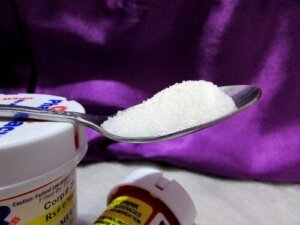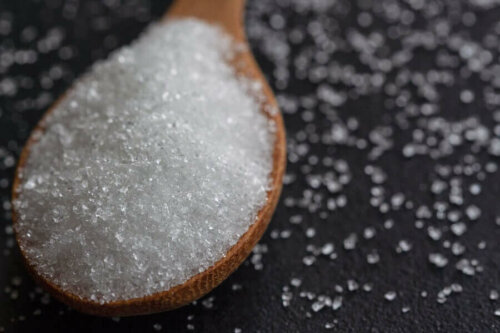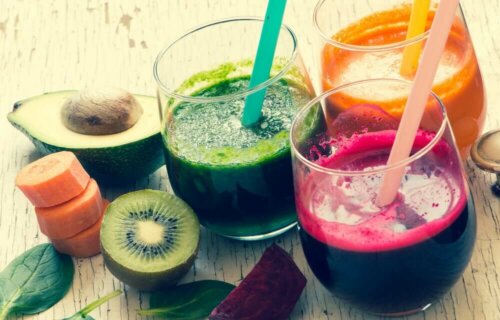How Does Your Body Assimilate Glucose?


Written and verified by the nutritionist Anna Vilarrasa
Although glucose is very important to enable your body to function normally, you need it in moderation. When glucose levels are too high or out of control, it can cause serious health problems. Glucose is a monosaccharide that contains 6 carbon atoms. It’s a form of sugar and is one of the most abundant organic compounds on Earth. So, how does your body assimilate glucose?
One of its main functions for humans is as a source of energy for all the cells in the body. Many of your organs need sugars, such as the brain and other tissues. Along with lipids, glucose is one of the main energy substances.
Glucose and sugar aren’t the same
These are two compounds that you shouldn’t confuse. Sugar (sucrose) is another chemical compound that is made up of glucose molecules and fructose molecules.
Although after breaking it down, your body will assimilate glucose, sugar isn’t necessary in your diet. What the body needs to function is glucose. And, as we’ll see below, it can come from other sources.
Read more: Are You Really Eating Enough Fiber?
Main sources of glucose

The way we normally ingest glucose is through carbohydrates and sugar. The most common are bread, pasta, rice, vegetables, fruits, and dairy products.
All carbohydrates end up contributing glucose to your body when they’re broken down. The only exception is fiber. Since your body doesn’t have the right enzymes to break it down, it passes intact through the digestive tract until it reaches the colon. There your intestinal bacteria are in charge of digesting it.
However, we should note that the body also has other pathways for energy in the absence of carbohydrates. Using fat and protein, other metabolic pathways function and the body can also assimilate glucose that way.
How does the body assimilate glucose?
When you eat foods rich in carbohydrates, your body starts to digest them. From the mouth to the small intestine, and thanks to enzymes, digestive juices, and movements of the digestive system, your body breaks down complex carbohydrates to obtain glucose.
The glucose molecules pass into the small intestine. But, from there, they still can’t be used by your cells.
Once they’re in the small intestine, they pass into the blood. At this point, the pancreas and insulin come into play. When the brain detects the presence of glucose in the blood, it sends a signal to the endocrine gland to secrete insulin. In normal situations, the pancreas secretes the necessary insulin automatically at all times.
We could say that insulin is the key that opens the door of the cells so that glucose can enter. Once inside the cell, it’s ready for your cells to use as a source of energy.
Differences in absorption by source
Although both sugar and carbohydrates end up providing energy to the body, the way your body assimilates glucose changes depending on what you eat.
Some foods are basically rich in simple sugar: honey, table sugar, syrups, soft drinks, or fruit juices. Since these foods are digested quickly, glucose also reaches the blood faster, producing spikes in blood glucose. In response, the pancreas also secretes more insulin, which is then more abundant in the blood.
One of the consequences of this response is that after the action of insulin, there’s a rapid decrease in blood glucose, leading to hypoglycemia. This can make you feel hungry, dizzy, have double or blurry vision, and have a headache.
On the other hand, when you eat foods rich in complex carbohydrates (whole grains and fiber-rich foods), your body assimilates glucose differently: it’s a slower and more progressive process. As a consequence, insulin also appears more constantly. Blood glucose remains constant and for longer and you avoid sudden spikes in blood sugar and lack of energy.

Discover: What Are the Symptoms of Hypoglycemia?
Health consequences of simple sugars
We’ve already seen that eating foods rich in simple sugars causes spikes in insulin and blood glucose. On a continuous basis, this generates a greater risk of suffering from diseases such as obesity, cardiovascular diseases, high blood pressure, and metabolic syndrome.
In addition, there’s a risk that your pancreas will end up not working normally, or that your cells will generate insulin resistance. If this happens, your blood glucose will be continuously elevated – which is what we call diabetes.
The body needs good glucose
As we’ve seen, a rapid assimilation can cause your energy to spike and fall throughout the day. And, in the long term, this can lead to problems with insulin resistance or type 2 diabetes.
The best way to avoid this is to eat fresh foods rich in complex carbohydrates: fruits and vegetables, whole grains, root vegetables, and dairy products.
All cited sources were thoroughly reviewed by our team to ensure their quality, reliability, currency, and validity. The bibliography of this article was considered reliable and of academic or scientific accuracy.
- Beilby J. (review). Definition of Metabolic Syndrome: Report of the National Heart, Lung, and Blood Institute/American Heart Association Conference on Scientific Issues Related to Definition. The Clinical Biochemist Reviews. 2004. 109:433-8.
- Berg, JM et al. Biochemistry. New York. WH Freeman 2002. Section 30.2.
- Delli Bovi AP, et al. Obesity and Obesity Related Diseases, Sugar Consumption and Bad Oral Health: A Fatal Epidemic Mixtures. Transnational Medecine. Enero 2017. 16:11-16.
- Lennerz BS, et al. Effects of dietary glycemic index on brain regions related to reward and craving in men. The American Journal of Clinical Nutrition. Setiembre 2013; 98(3):641-7.
- Lustig RH, et al. The toxic truth about sugar. Nature. Febrero 2012. 482;27-29.
- Vasanti S, et al. Sugar-Sweetened Beverages and Risk of Metabolic Syndrome and Type 2 Diabetes. Diabetes Care. Noviembre 2010. 33(11):2477-2483.
This text is provided for informational purposes only and does not replace consultation with a professional. If in doubt, consult your specialist.








